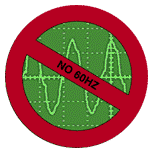
Aplysia abdominal ganglion
Lab #8
Intracellular Recording of Aplysia Abdominal Ganglion Cells

Aplysia abdominal ganglion
Equipment Needed:
A&M 1600 DC amp, half cell, glass microelectrodes (10 M-ohm) filled with 3M KCl, MacLab setup, oscilloscope & audio monitor, large dissection pan and large pins, small Sylgard dish and insect pins for ganglion, 350 mM MgCl solution for dissection, Aplysia saline (AS), Type IX bacterial protease (Sigma P-6141) @25 units/ml for desheathing the ganglion, large syringe for injection of MgCl.
Introduction
One approach to understanding nervous systems is to tackle small systems of neurons, usually in invertebrates, where the number of neurons involved in a particular response may be quite small, and where each neuron can be reidentified accross different members of the species. The numerical simplicity of these systems can help leverage a rigorous understanding of the cellular basis of CNS-dependent phenomena, such as learning and memory, that can occur with some simple behaviors these organisms engage in. This has been the program for much of the work on the Aplysia nervous system. One interesting feature of this system is the presence of gigantic neurons---some visible to the naked eye. This makes it a highly convenient system to learn intracellular recording.
Dissection
Inject MgCl to prevent contraction and remove abdominal ganglion per TA instructions. After animal is opened and pinned, rinse body cavity in AS:
| NaCl | 460 mM |
| KCl | 0.01 mM |
| CaCl | 10 |
| MgCl | .022 |
| MgSO4 | 0.26 |
| Hepes | 0.01 |
| pH | 7.5 |
After ganglion is removed, rinse in AS, and place in protease (25 units/ml) for approx. 15 minutes at room temperature. Remove from protease and rinse 4-5 times in AS. The superficial neurons of the ganglion are intercalcated with the sheath, so if the sheath is reasonably thin (younger animal) you may opt to attempt to enter a cell without trying to remove the remaining sheathe. If the sheath is too thick, use a scrapped tungsten electrode taped to a small holder, hook the tip slightly, and attempt to gently remove the sheath by scraping.
Positioning the microelectrode holder, the dish, and the dissection scope correctly is a bit challenging--use small amounts of dental wax on the underside of these objects to help stabilize them.
Once the microelectrode is up against a cell membrane, advance it very slowly with the fine control, and tap the end of the holder very lightly, while monitoring the probe membrane potential (don't forget to DC balance the probe).
Experimental Protocol:
Characterize one or several neuron's properties, including resting rate (if present), response to polarizing and depolarizing current injection, post-inhibitory rebound, cell impedence, and other properties such as habituation as time allows.
LABORATORY REPORT
Your lab report will be due on April 29, 1997 in standard format. Refer to Basic Lab Report Writing Tips for some new additional suggestions regarding methods
sections, along with some changes you'll welcome regarding inclusion of
filter settings and histogram extension settings in your lab report.
WWW resources. Northwest Slug Page, Tom Nolen's aplysia neurophysiology lab course web, website of the NIH Aplysia Resource Facility, and the Aplysia Hometank.
